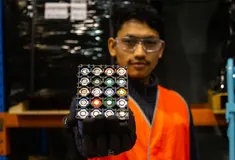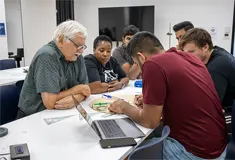The Engineering Institute of Technology (EIT) is a multi-award winning institution specializing in engineering offering practical-focus programs designed by industry experts. EIT combines practical, hands-on learning with a blended model of interactive live webinars, state-of-the-art technologies, and industry-experienced lecturers.
EIT offers a range of programs delivered online or on-campus. The vocational programs and higher education degrees are registered and accredited by the Australian Government. Some of our programs are also recognized under three international engineering accords. Whether studying online or on-campus, students benefit from a world-class education that emphasizes technical expertise and global networking opportunities.
With campuses in Perth, Melbourne, and Brisbane, EIT provides a supportive environment with small class sizes, modern facilities, and dedicated learning support. Programs include bachelor's, master's, and doctorate degrees, focusing on industry-relevant skills to equip students for success. (Please note that not all programs are currently available in Melbourne and Brisbane campuses; visit the on-campus page to learn more.)
EIT’s Perth campus is a modern, multi-level facility in West Perth, while the Melbourne campus is centrally located in the heart of the city. The Brisbane campus offers a vibrant study experience in one of Australia’s fastest-growing cities, with access to excellent facilities and opportunities to connect with a thriving engineering community.
Yes, EIT regularly hosts various events, including free technical webinars, workshops, networking events, information sessions and open days. Please visit the Events page to learn more.




























